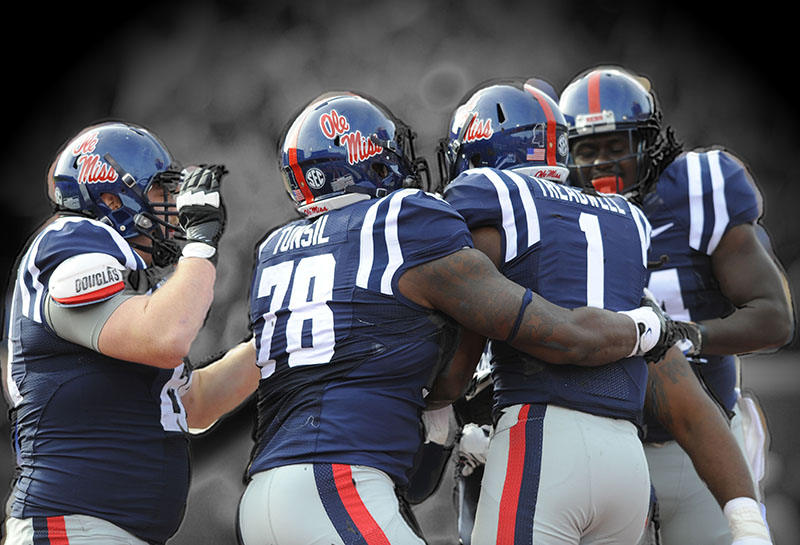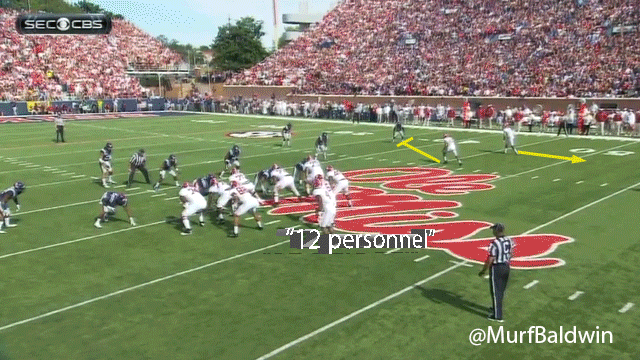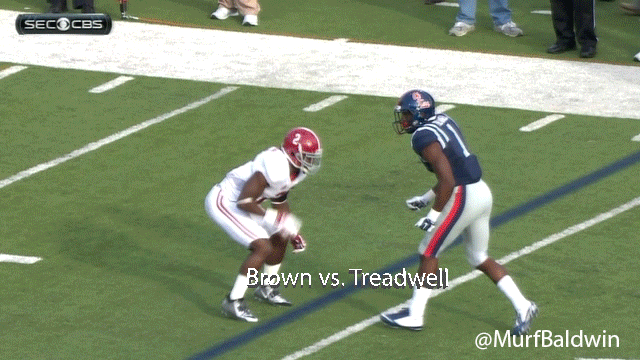Beating Bama is only scratching the surface of what Ole Miss is capable of
Maybe it comes with the territory?
For the uber-successful Alabama Crimson Tide — fan base and writers alike — not enough credit was given to the University of Mississippi for the type of quality program that its built under third-year head coach Hugh Freeze.
Instead of recognizing the combination of coaching, scheme and personnel at Ole Miss’ disposal, Tide supporters thought it would be best to harp on the past in an effort to discredit what the Rebels are building henceforth.
As someone who wrote few weeks ago that the Rebels may have the most talented defense in the entire Southeastern Conference (click here to read that article), I’m here to tell you: The Rebels are building something special over there in Oxford.
And this win says more about where they’re at as a program, opposed to how bad Alabama played.
Because Ole Miss is that good.
Bend-But-Don’t-Break Defense
Ole Miss’ “Landshark” defense, at it’s affectionately referred to as, is predicated on playing fast and physical football.
Defensive coordinator Dave Wommack has installed a brilliant 4-2-5-based outfit that’s fast enough to match up with offenses of the hurry-up no-huddle variety, and it’s physical enough to swap paint with pro-style teams such as Bama and Louisiana State University.
This scheme only has one true “prototypical” linebacker, middle backer D.T. Shackelford, the rest of the players, in the back seven, are LB/defensive back hybrids.
Going against Bama’s modernized version of the West Coast offense, Mississippi knew it was going to give up a few big plays to the superstar duo of Amari Cooper (receiver) and T.J. Yeldon (running back), but it couldn’t afford to have them both go off in dramatic fashion.
Cooper had a good game: nine catches for 91 yards with zero touchdowns, but it wasn’t up to par with the standard he’s set so far this season.
Yeldon did his thing as well: 20 carries for 123 yards with zero TDs (mostly non impactful) — but the Rebels defense knew that it had to limit virtually everyone else on the periphery; they couldn’t afford for anyone else to pick up the slack.
The defense particularly did an outstanding job against fellow star running back Derrick Henry and his patented outside-zone runs. Prior to the tilt, I believed Bama might find success with Henry finding cut-back lanes against a fast, over-aggressive defense like the one Ole Miss possesses.
But Henry’s statline: 17 carries for 37 yards (2.2 average per carry), suggests otherwise.
Here’s what Henry saw the majority of his totes; going against an even-front alignment, Henry tries to stretch it as far as he can (playside) in hopes of bending it back to a hopefully formed gap.
All play-side linemen do a wonderful job of scraping and stringing out the play — especially the edge-defender, defensive end C.J. Johnson. With the back-side pursuit in tow, Henry wouldn’t have had a chance to bend it back either way.
Ole Miss’ defensive line is an active bunch that pursues play side extremely well; the second-level defenders are some of the very best in the country at swarming to the ball.
This combination was exemplary by how Wommack chose to defend Cooper.
One play that Cooper has been virtually unstoppable with has been the “smoke” screen. Depending on what look the defense provides, Bama will shift its called run play to an audibled screen to Cooper.
This is exactly what happened in the above sequence. But being as though it has the fastest defense in the entire country, with a hybrid freak like Tony Conner (plays the Huskie position), Ole Miss is able to swarm to the ball further living up to its “Landsharks” moniker.
But this particular stop was predicated on corner Senquez Golson, who had the game-preserving interception in the waning moments of the tilt, funneling the run back toward the action. That’s physical, fast and intelligent football.
The Ole Miss defense has no glaring flaws; now that’s scary.
ALL NFL Receiving Corps
Ole Miss doesn’t have very many negatives regarding its on-field play. But one glaring weakness surrounds its inability to generate yards in the between-the-tackles run game on offense.
It’s most effective ball-carrier is probably the 5’8″, 166-pound Jaylon Walton. Obviously he won’t make much of a dent in between the tackles, but his 40 carries for 238 yards (three Tds) — mostly of the perimeter variety — have been worth its weight in gold.
So has the 33 carries for 152 yards from the 5’11”, 190-pound I’Tavius Mathers. But it’s the 6’4″, 217 -pound Bo Wallace that is often used to loosen up the interior of the defense.
That’s right, the quarterback.
So when your run game lacks physicality you have to find ways to circumvent it. And having an entire corps of physical NFL receivers certainly goes a long way into trying to.
Any talk of the receiving corps must begin and end with Laquon Treadwell. I was asked in a couple of different radio interviews if Bama’s star freshman cornerback Tony Brown could matchup with the 6’2″, 230-pound Treadwell.
My answer: no.
While Brown is a future superstar in his own right, Treadwell is in a league of his own off physicality alone. You had to think if Treadwell was able to catch a screen, hitch or quick curl, he could do damage with his Terrell Owens-like skill set.
Case in point: Showing a ton of respect for Treadwell’s off-the-snap physicality, Brown allows a free release. This is very uncharacteristic of the in-your-face press-man corner.
Additionally, instead of Brown staying in Treadwell’s hip pocket, Brown decides to stay on top of the route thus favoring a deeper route. With Wallace going to the back-shoulder throw, Brown is essentially boxed out from getting back to the ball.
And any thought of arm-tackling Treadwell should be met with immediate laughter; he can’t be tackled by one man alone. He’s simply a grown man being allowed to plays with school boys.
Furthermore, when you throw in the speedy 6’3″, 196-pound Cody Core, the reliable Vince Sanders and the uber-athletic Evan Engram, you can plainly see how the receiving corps can take heat off the finesse run game.
I don’t think the lack of between-the-tackles prowess will be the Rebels’ undoing just for the fact of how much talent is on that side of the ball.
Prospects Moving Forward
While it’s too early to look at the schedule in totality, it’s worth noting that Ole Miss has a ton of tough games ahead, starting this weekend at Texas A&M.
With LSU, Arkansas, Tennessee, Auburn and Mississippi State among the remaining games, you can bet your bottom dollar that Ole Miss will have to earn its way into the College Football Playoff.
Ole Miss has the very best defense in the entire country, an underrated play-making QB and major threats out wide. But most of all it has a Grade-A coaching staff capable of out coaching anyone it opposes.
I have complete confidence in the defense proving its worth on a weekly basis, and I’ve been sold on Wallace’s ability to steer this team in the right direction.
When it’s all said and done, I fully expect Ole Miss to be in the thick of it all. Beating Bama should’ve been considered an upset a couple of years ago, but Ole Miss should be expected to compete with any team on the field with it.
This teams is for real, folks.





